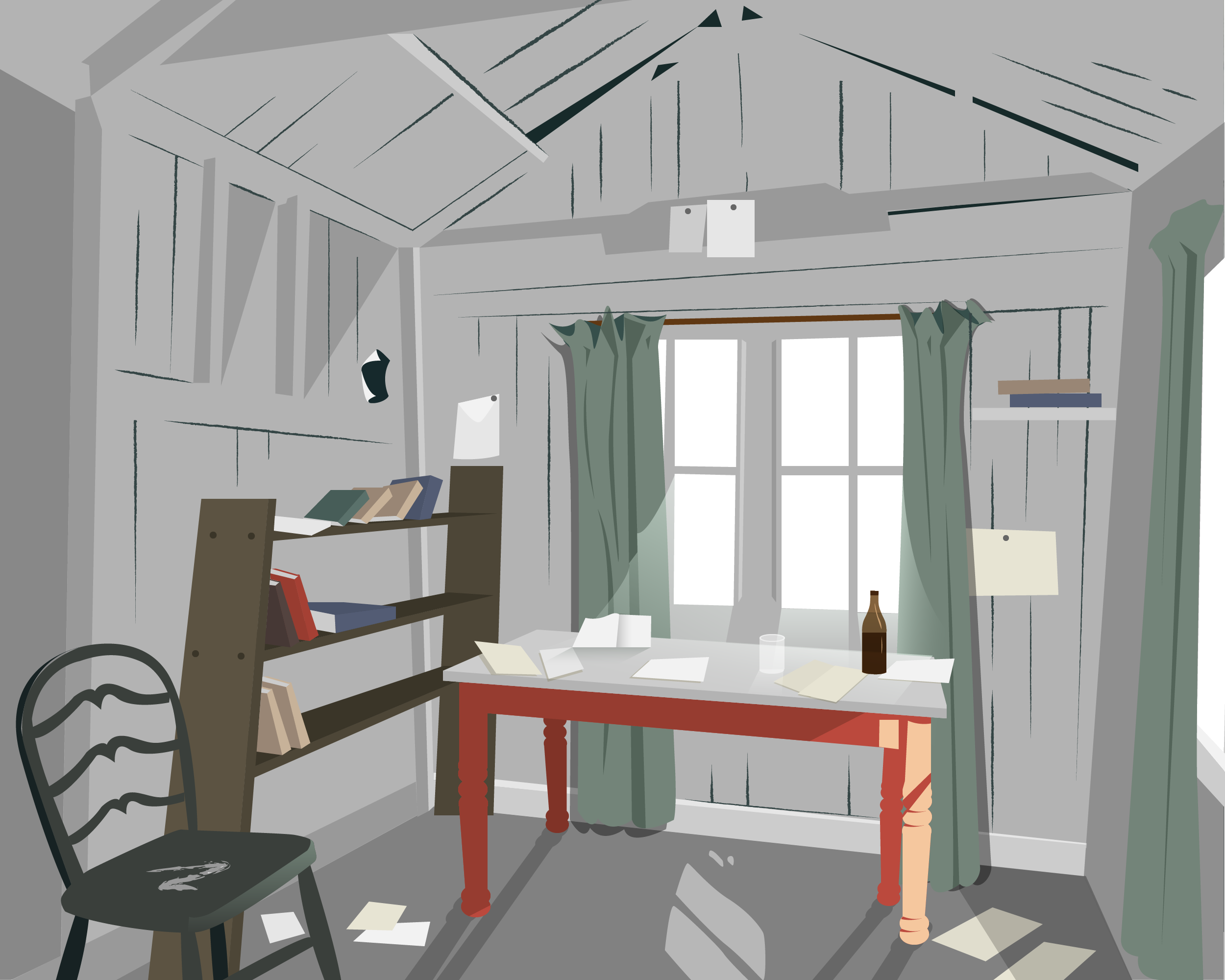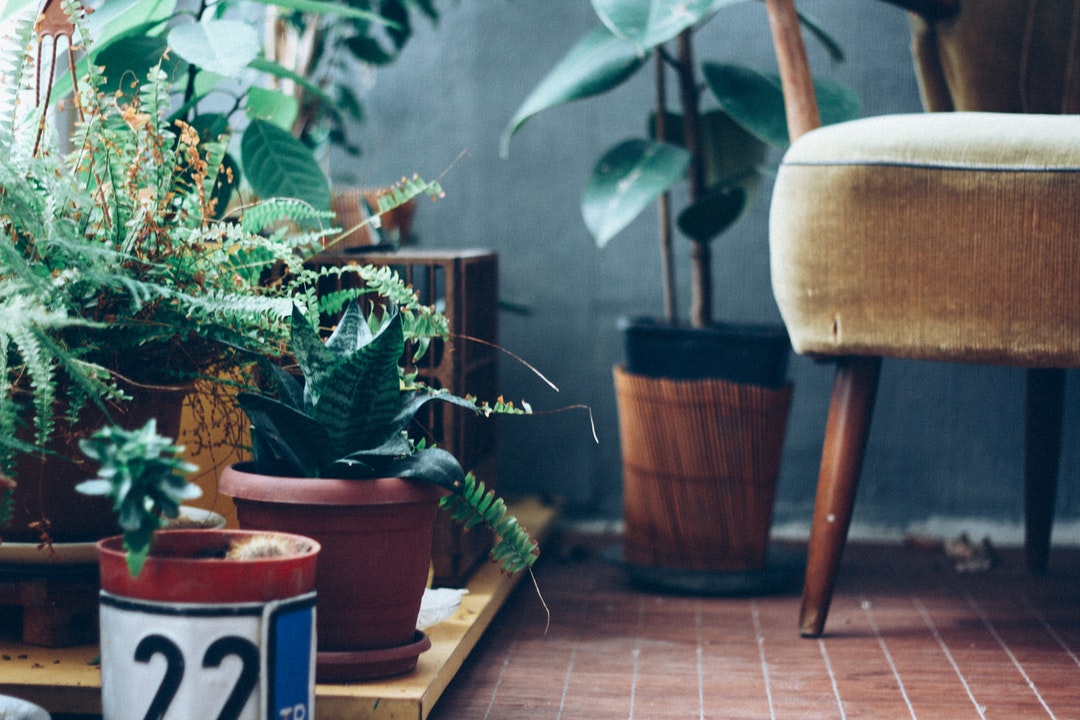A Window into Creative Spaces: You Should Have One Too
When is a room more than a room? Can it be one of your creative spaces? When we think of rooms, we think of an area that serves a purpose. Your kitchen is for cooking, your lounge is for lounging, your bedroom is for sleeping. So, when does a room become more than just a space that serves a purpose?
In this series of illustrations from Aspire Doors, we decided to look ‘through the window’ of some of the most important rooms in history. These rooms or creative spaces are both historically and culturally significant and we thought it would be interesting to see how they’re set up.
We thought this might get you thinking about how the spaces you work or relax in are set up to affect your life. Have you set yourself up to be inspired? Do you have a place where you feel like you can focus? Take a look at these famous creative spaces and see what you think…
1) Steve Jobs’ Living Room in 1982
This illustration depicts Steve Jobs lounge in 1982. This wasn’t before he was successful. He was a multi-millionaire at the time, but this was his way of exploring minimalism. Apple, as a brand, is known for its minimalism. From its designs to its advertising, they do a lot with very little. It defines them as a company and has clearly been very successful for them.
 Steve Jobs took that to his home life. As you can see, some light and music was all he needed. Minimalism is about living without clutter and only buying things that are of value to you. All Steve Jobs needed in his home space was some light, tea and music. This is quite an extreme example, but worth thinking about. Is your personal space cluttered? Could you free yourself of distractions and unnecessary things you have lying around? It could be one of your creative spaces too.
Steve Jobs took that to his home life. As you can see, some light and music was all he needed. Minimalism is about living without clutter and only buying things that are of value to you. All Steve Jobs needed in his home space was some light, tea and music. This is quite an extreme example, but worth thinking about. Is your personal space cluttered? Could you free yourself of distractions and unnecessary things you have lying around? It could be one of your creative spaces too.
Related: The Importance of Finding Your Happy Place
2) Frida Kahlo’s Studio in Casa Azul
Frida Kahlo was a Mexican artist who explored the questions of class, race, gender, identity and more in her work. She was a prominent feminist and her story is breath-taking. She travelled a lot over the course of her life, but she had a very strong connection to her family home in Coyoacan, Mexico. Known as the Blue House, she was born and later died in this house.
 She spent a lot of time there in the later stages of her life, recovering from horrific injuries she sustained. It was also during this time that she created many of her famous works from a wheelchair in her studio. Her home had a big influence on her work. Do you feel a strong sentimental attachment to the space you live or work in?
She spent a lot of time there in the later stages of her life, recovering from horrific injuries she sustained. It was also during this time that she created many of her famous works from a wheelchair in her studio. Her home had a big influence on her work. Do you feel a strong sentimental attachment to the space you live or work in?
3) John Lennon & Yoko Ono’s ‘Bed in For Peace’
This example shows how special things can be created in the most unassuming of spaces. This hotel room became the setting for John Lennon & Yoko Ono’s Second ‘Bed In for Peace’. They recorded the song ‘Give Peace a Chance’ in this room, with many famous faces passing through to lend their support to their campaign.
 A simple hotel room can be the setting for something great. Lennon and Ono didn’t set up this room themselves, but still were able to use it to achieve great things. A lesson that sometimes, it’s about making the most out of what you’ve got.
A simple hotel room can be the setting for something great. Lennon and Ono didn’t set up this room themselves, but still were able to use it to achieve great things. A lesson that sometimes, it’s about making the most out of what you’ve got.
Related: 5 Top Universities In Malaysia For PhD
4) Roald Dahl’s Writing Hut
Roald Dahl is one of the world’s most achieved children’s authors. His books captured the hearts of so many children and he will forever be known as a literary great. The environment of his writing hut had a huge bearing on his work. Whilst Steve Jobs preferred a clean, minimal aesthetic, Roald Dahl’s Writing Hut was rather cluttered.
 The Hut was filled with deeply personal objects, photos and letters that he had collected over the course of 40 years. He told of there being goat stools in the corner, spider webs, the smell of tobacco, a far cry from the clean, minimal set up Steve Jobs had. It was where he went to shut off the outside world and completely immerse himself in his writing. Do you work better when surrounded by objects that are personal to you?
The Hut was filled with deeply personal objects, photos and letters that he had collected over the course of 40 years. He told of there being goat stools in the corner, spider webs, the smell of tobacco, a far cry from the clean, minimal set up Steve Jobs had. It was where he went to shut off the outside world and completely immerse himself in his writing. Do you work better when surrounded by objects that are personal to you?
5) Ernest Hemingway’s Home Study, Florida
The home study of Ernest Hemingway in Key West, Florida is where he created some of his most famous works. Just like Roald Dahl’s Writing Hut, the study of Ernest Hemingway was filled with treasured antiques that inspired him. He would spend his mornings writing in his study, before the scorching heat of Florida would become too much for him to focus.
 Roald Dahl had to construct a hut away from his home to focus on his writing. Ernest Hemingway was able to work from his home by making a space within that was conducive to his creativity. Do you have a space in your home where you can work? Could you?
Roald Dahl had to construct a hut away from his home to focus on his writing. Ernest Hemingway was able to work from his home by making a space within that was conducive to his creativity. Do you have a space in your home where you can work? Could you?
Related: IB Scores Needed For Top Universities: 7 Reasons You Should Get It
6) Dylan Thomas’ Writing Shed
Roald Dahl modelled his writing hut on the writing shed of Dylan Thomas, a Welsh poet. Thomas filled the shed with personal artefacts and it was a place where he could fully absorb himself in his work and writing. He had beautiful vistas of the Welsh country side out of the window.
 Looking out of the window of his writing shed gave Dylan Thomas everything he needed to inspire his writing. The natural beauty, the natural chaos. Are you inspired by the natural world? Or do you need to be completely closed off from the outside to focus on your creativity? You might need more creative spaces just like this.
Looking out of the window of his writing shed gave Dylan Thomas everything he needed to inspire his writing. The natural beauty, the natural chaos. Are you inspired by the natural world? Or do you need to be completely closed off from the outside to focus on your creativity? You might need more creative spaces just like this.



